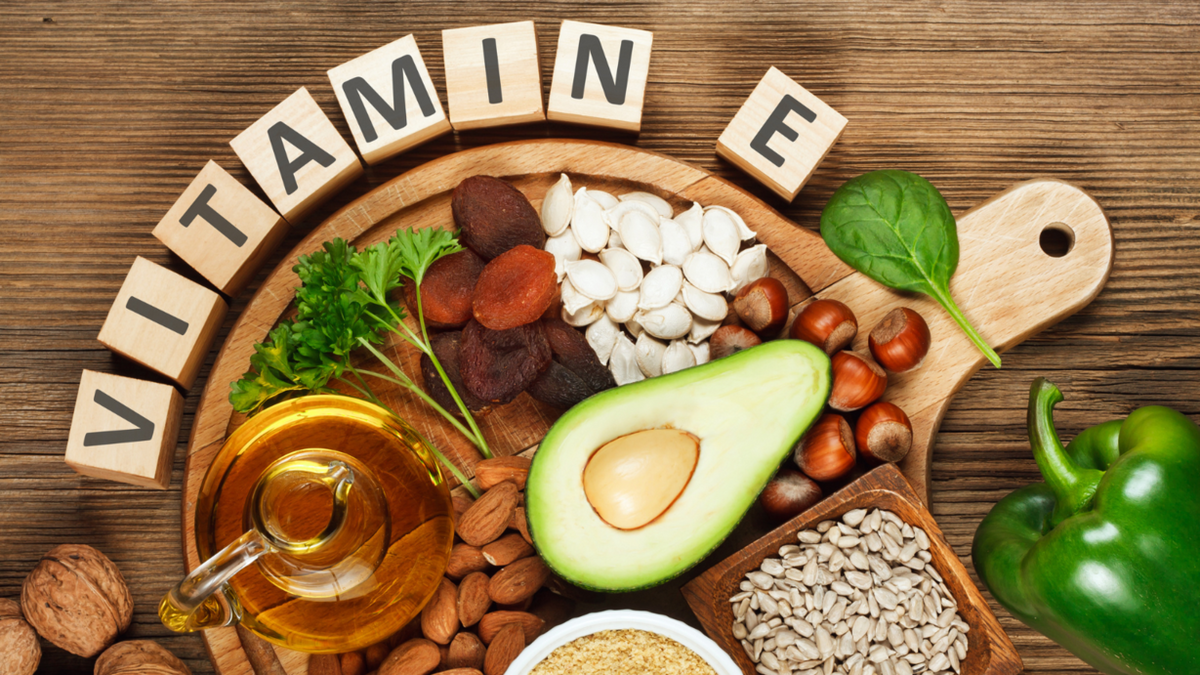
Why Vitamin E Matters for Kids and Teens’ Growth & Immunity
|
|
Tiempo de lectura 4 min
From brain development to immune strength, a child’s body is constantly building, repairing, and growing. And while a balanced diet fuels much of that progress, certain nutrients play a bigger role behind the scenes.
One of them is certainly Vitamin E—a powerful antioxidant that supports healthy cells, a strong immune system, and proper development through childhood and adolescence[⁶].
Because kids are constantly exposed to environmental stressors—like air pollution, processed foods, and even intense physical activity—antioxidant support is more important than ever[¹]. Vitamin E can help neutralize these daily oxidative threats, acting like a shield at the cellular level[⁷]. It's a small nutrient that can have a big impact when included consistently in your child's meals–and even supplements.
What Is Vitamin E?
Vitamin E isn’t just one thing—it’s actually a group of fat-soluble compounds, with alpha-tocopherol being the most active form in the human body[¹]. It acts as a powerful antioxidant, helping to neutralize free radicals that can damage cells and tissues—especially important during growth spurts and increased physical development[²].
You can find it in foods like sunflower seeds, spinach, almonds, and fortified cereals—plus in dietary supplements when needed[⁴]. But do growing bodies really need it? Absolutely.

Why Kids and Teens Need Vitamin E
1. Supports Brain and Nervous System Health
The brain undergoes major development during early life. Vitamin E helps protect the delicate fatty tissues in the brain from oxidative stress, which is crucial for normal cognitive and motor development³. In fact, deficiencies in Vitamin E have been linked to neurological issues and learning difficulties in children[⁴].

2. Boosts Immune Function
Kids are exposed to countless germs—and Vitamin E helps their immune systems respond effectively. It plays a critical role in T-cell function, enhancing the body’s ability to fight off infections⁵. One study found that Vitamin E supplementation improved immune response and reduced infection rates in children with deficiencies[⁵].

3. Powerful Antioxidant Protection
When kids grow, their metabolism ramps up—meaning more free radicals are naturally produced. Vitamin E acts as a cellular shield, helping to prevent damage to the skin, organs, and immune cells[²]. This is especially helpful for active kids who may experience higher oxidative stress from sports or environmental exposure.

4. Possible Link to Growth and Height
Some research suggests a link between fat-soluble vitamin levels (including Vitamin E) and growth performance in children. A 2023 study found that low levels of Vitamins A, D, and E were associated with slower growth in children aged 1–6[⁶]. While more research is needed, it’s a potential connection worth paying attention to.

5. Protects Vision and Skin
Vitamin E also helps maintain skin integrity and eye health—two important areas during rapid physical development. It protects eye cells from oxidative damage and may even support clearer vision during those screen-heavy school years[⁷].

Vitamin E Food Sources for Kids
Helping kids get more Vitamin E can be simple (and tasty):
- Sunflower seeds – a crunchy lunchbox snack[¹]
- Almonds and nut butters[¹]
- Spinach and broccoli[¹] – perfect for pasta or smoothies
- Fortified cereals or plant-based milks[¹]
- Avocados and olive oil[¹]
Most healthy kids get enough from food alone, but those with dietary restrictions or fat absorption issues (like celiac disease or cystic fibrosis) may need help from a pediatrician.

Vitamin E Deficiency: What to Know
Though rare in healthy children, Vitamin E deficiency can still occur—especially in kids with fat-malabsorption disorders. Signs may include:
If you notice these signs or have concerns about your child’s nutrition, consult with a pediatrician.
Conclusion
Vitamin E isn’t just a nutrient—it’s a growth ally. It protects developing brains, fuels strong immune systems, and shields cells from everyday damage. For growing kids and teens, a balanced intake of Vitamin E can support both short-term wellness and long-term development. A healthy diet—with seeds, greens, and healthy oils—can go a long way in powering up young bodies for whatever life throws their way.
FAQs
1. How much Vitamin E do kids need daily?
It depends on age. Children aged 4–8 need about 7 mg/day, while teens (14–18) need about 15 mg/day. Most can meet this through food alone[⁵].
2. Can too much Vitamin E be harmful?
Yes—especially from supplements. High doses may increase bleeding risk. Always talk to a healthcare provider before supplementing[⁵].
3. What if my child is a picky eater?
Try blending Vitamin E-rich greens like spinach into smoothies or sneaking avocado into sandwiches. Fortified cereals can also help boost intake.
References
National Institutes of Health. (2021). Vitamin E Fact Sheet for Health Professionals. Retrieved from https://ods.od.nih.gov/factsheets/VitaminE-HealthProfessional/.
Traber, M. G. (2021). Vitamin E regulatory mechanisms. Annual Review of Nutrition, 41, 105–128. Retrieved from https://pubmed.ncbi.nlm.nih.gov/17439363/ .
Traber, M. G., & Head, B. (2021). Vitamin E: Necessary Nutrient for Neural Development and Cognitive Function. Nutrients, 13(8), 2678. https://www.ncbi.nlm.nih.gov/pmc/articles/PMC8842820/
Jiang, Q. (2014). Natural forms of vitamin E: metabolism, antioxidant, and anti-inflammatory activities and their role in disease prevention and therapy. Free Radical Biology and Medicine, 72, 76–90. Retrieved from https://pubmed.ncbi.nlm.nih.gov/24704972/ .
Meydani, S. N., et al. (2004). Vitamin E and respiratory infection in the elderly and young. Annals of the New York Academy of Sciences, 1031(1), 301–314. Retrieved rom https://pubmed.ncbi.nlm.nih.gov/15315997/
Li, F., Tan, Y., & Zhou, X. (2023). Prediction values of fat-soluble vitamins of growth retardation in children aged 1–6 years. Frontiers in Nutrition, 9, 841243. https://www.ncbi.nlm.nih.gov/pmc/articles/PMC11532041/
Hadi, A., et al. (2020). The role of vitamin E in ocular health: a systematic review. Journal of Current Ophthalmology, 32(4), Retrieved from https://www.sciencedirect.com/science/article/pii/S2666566224000315 .



